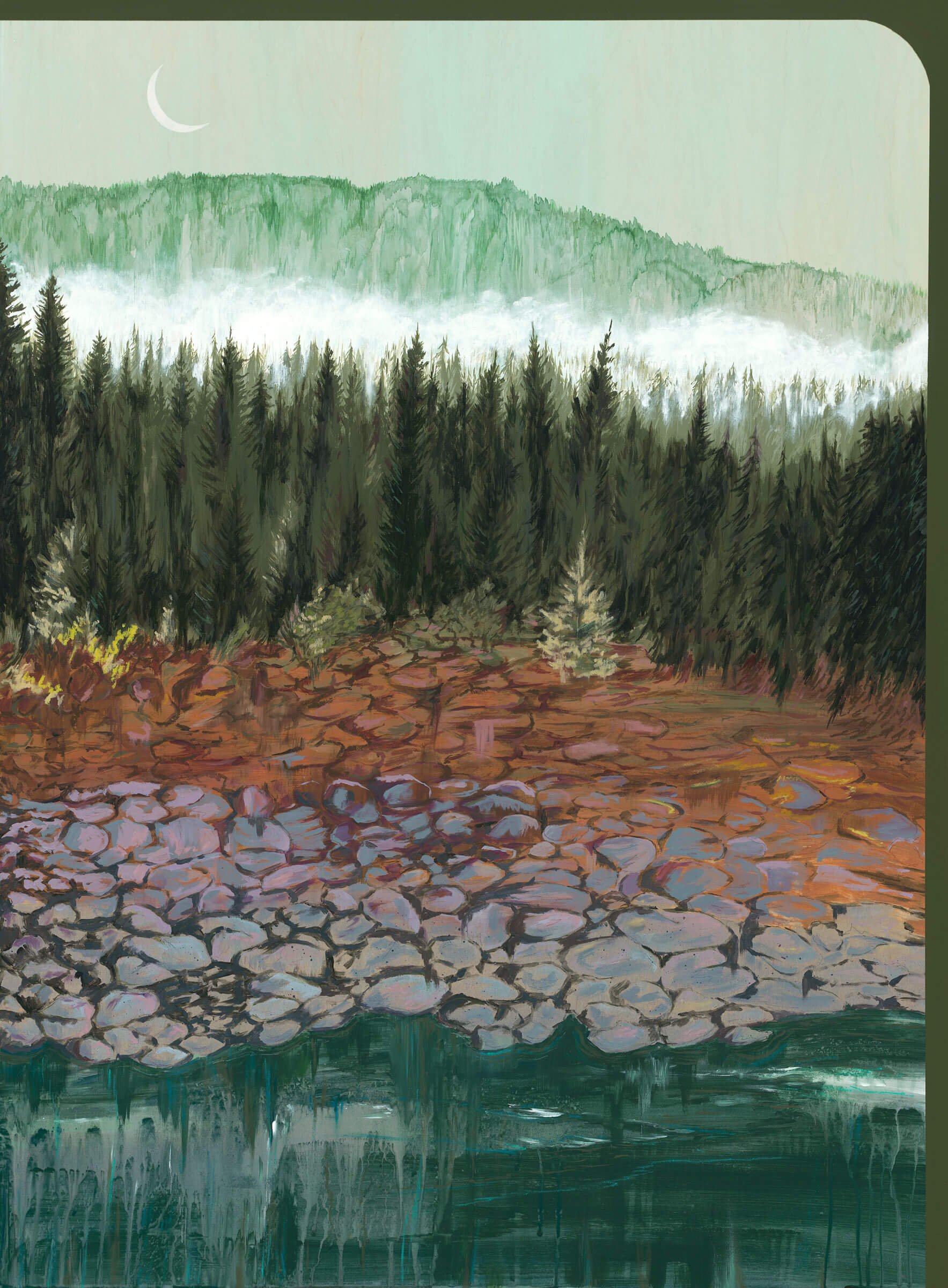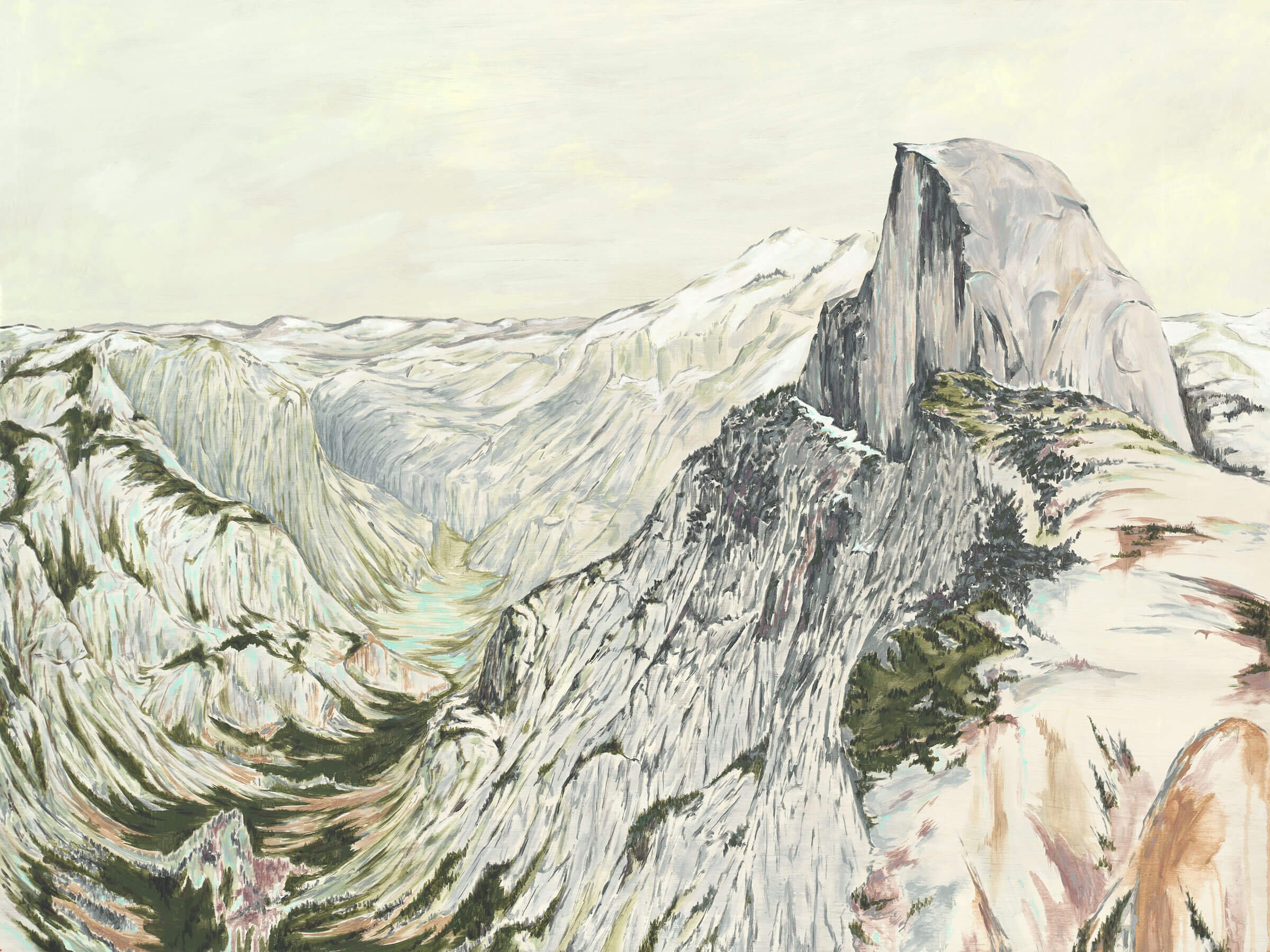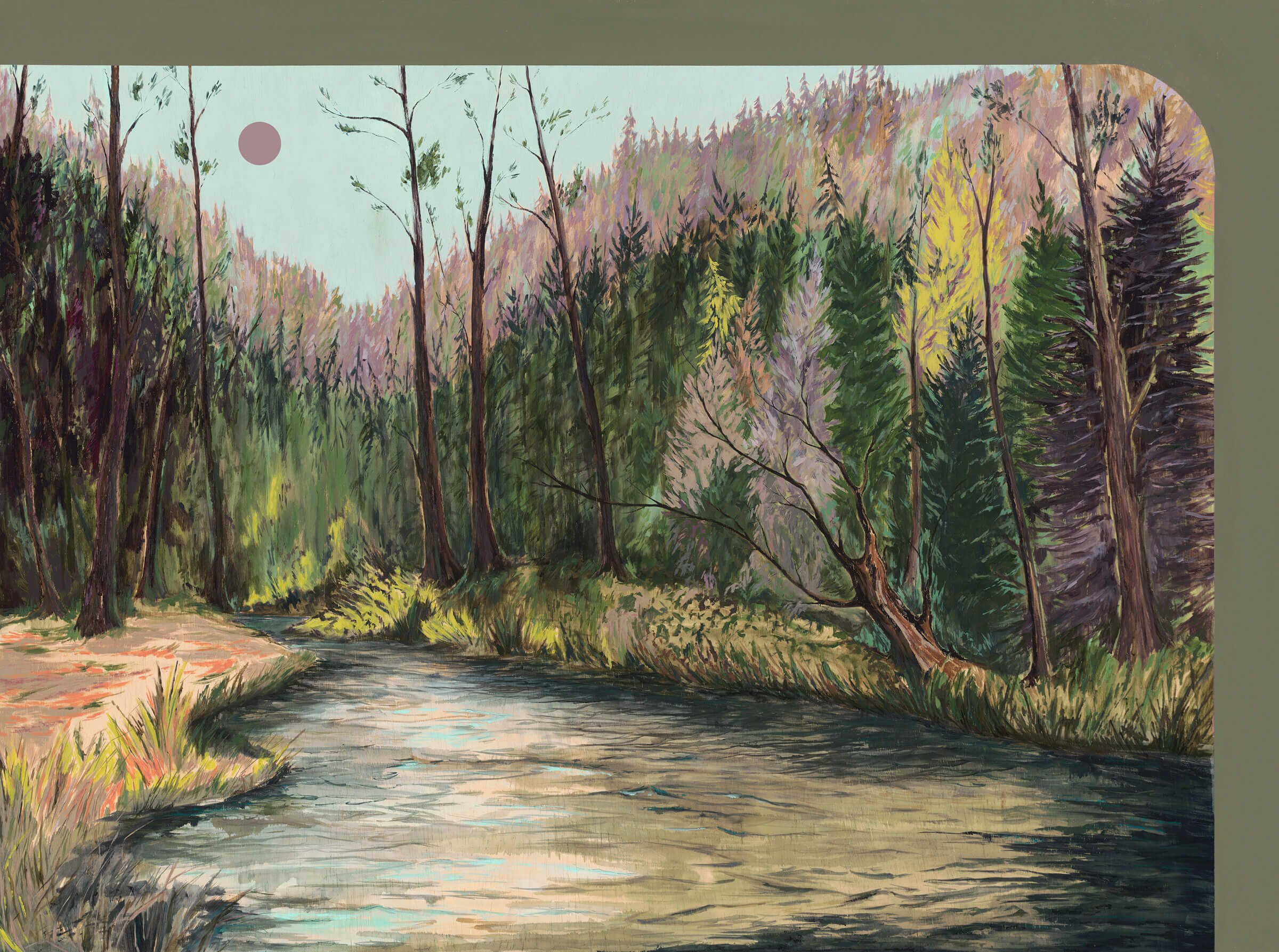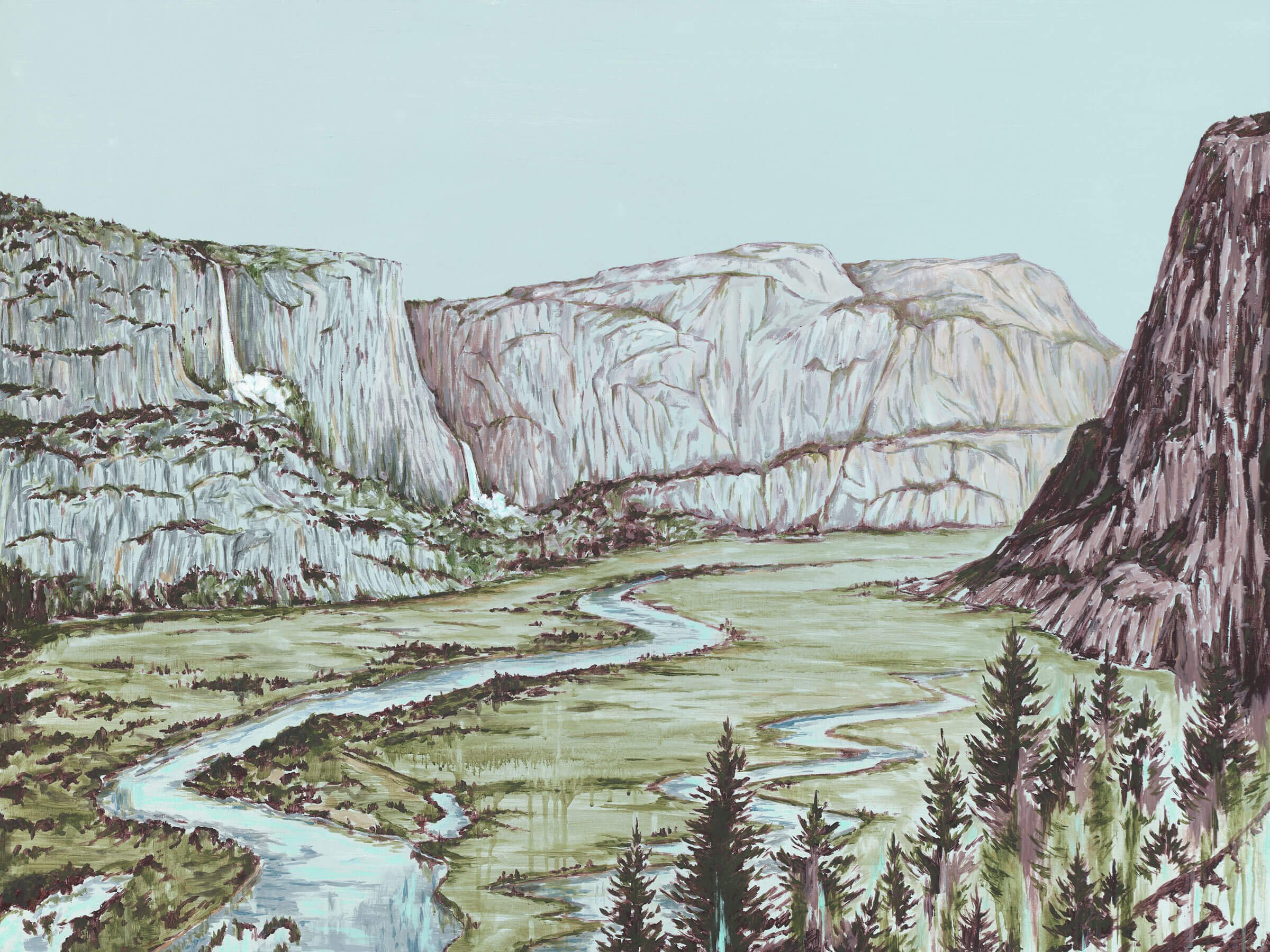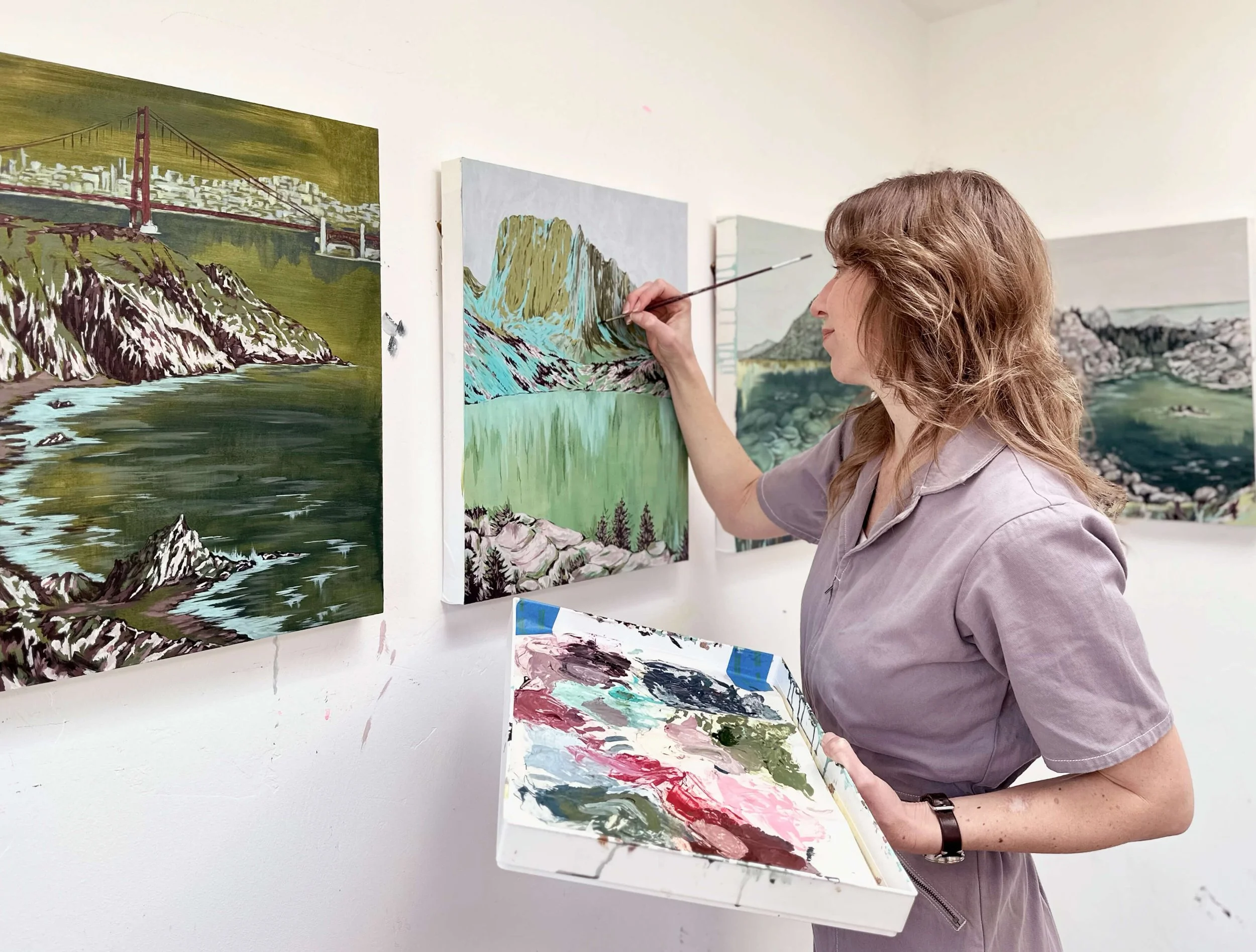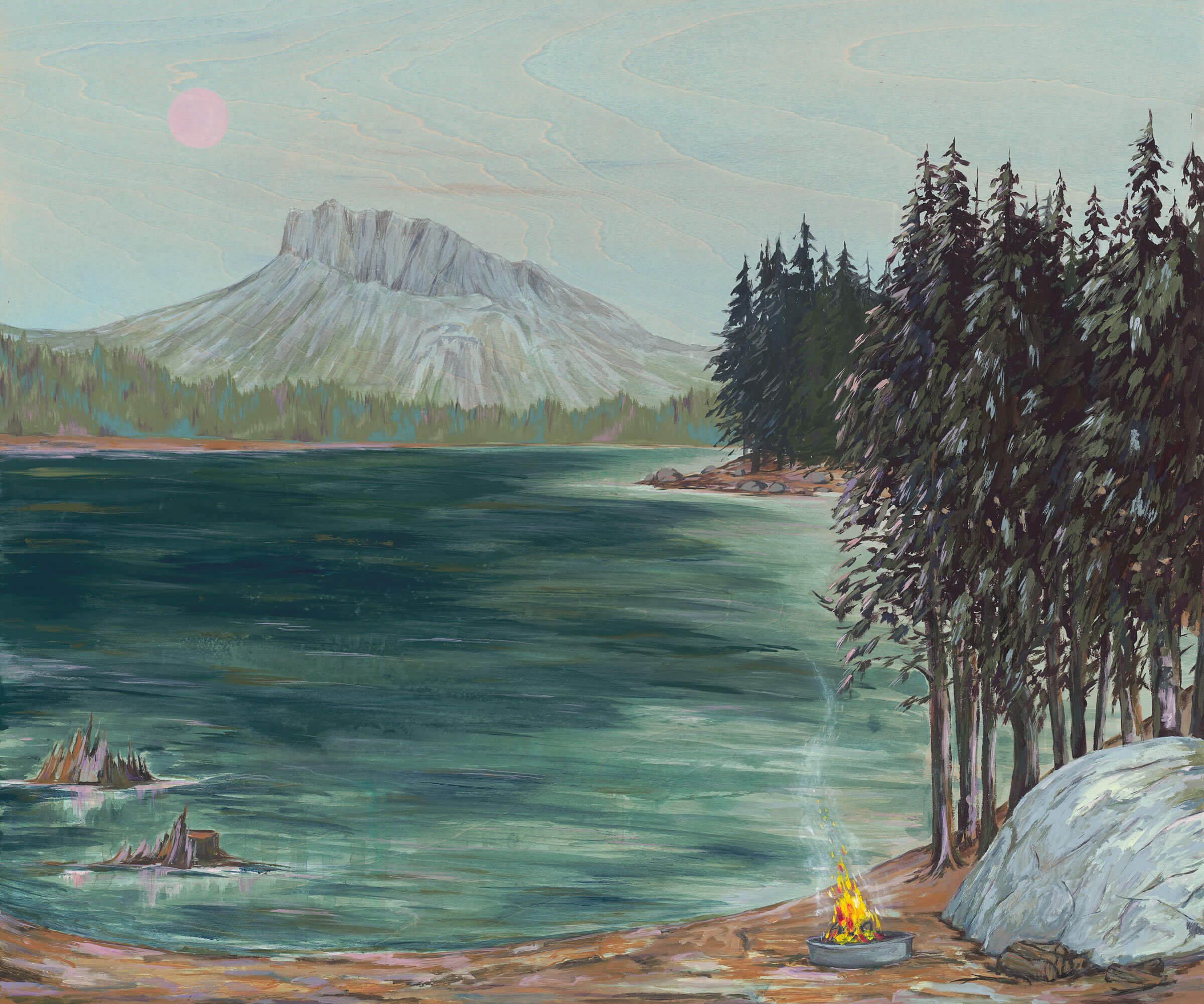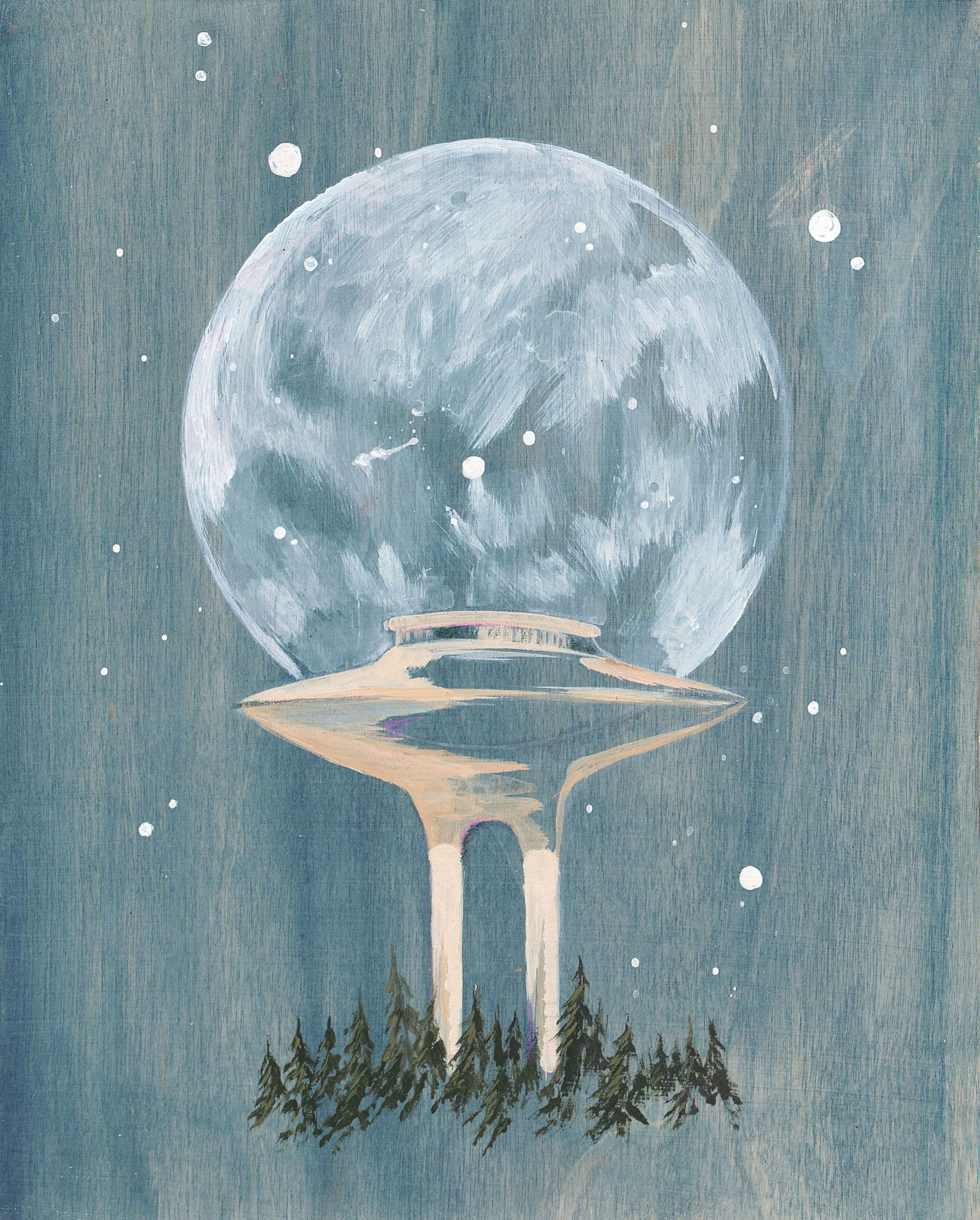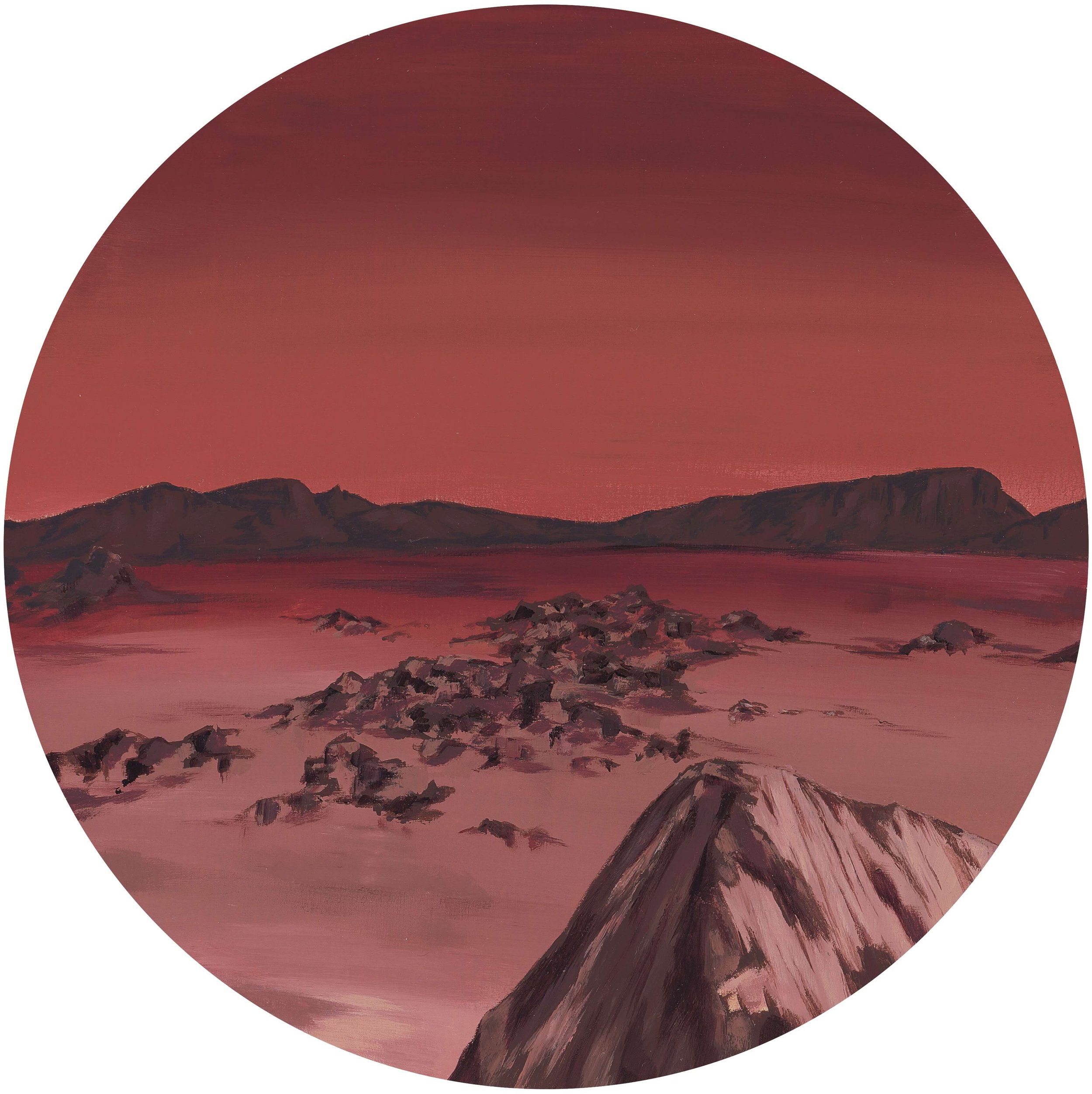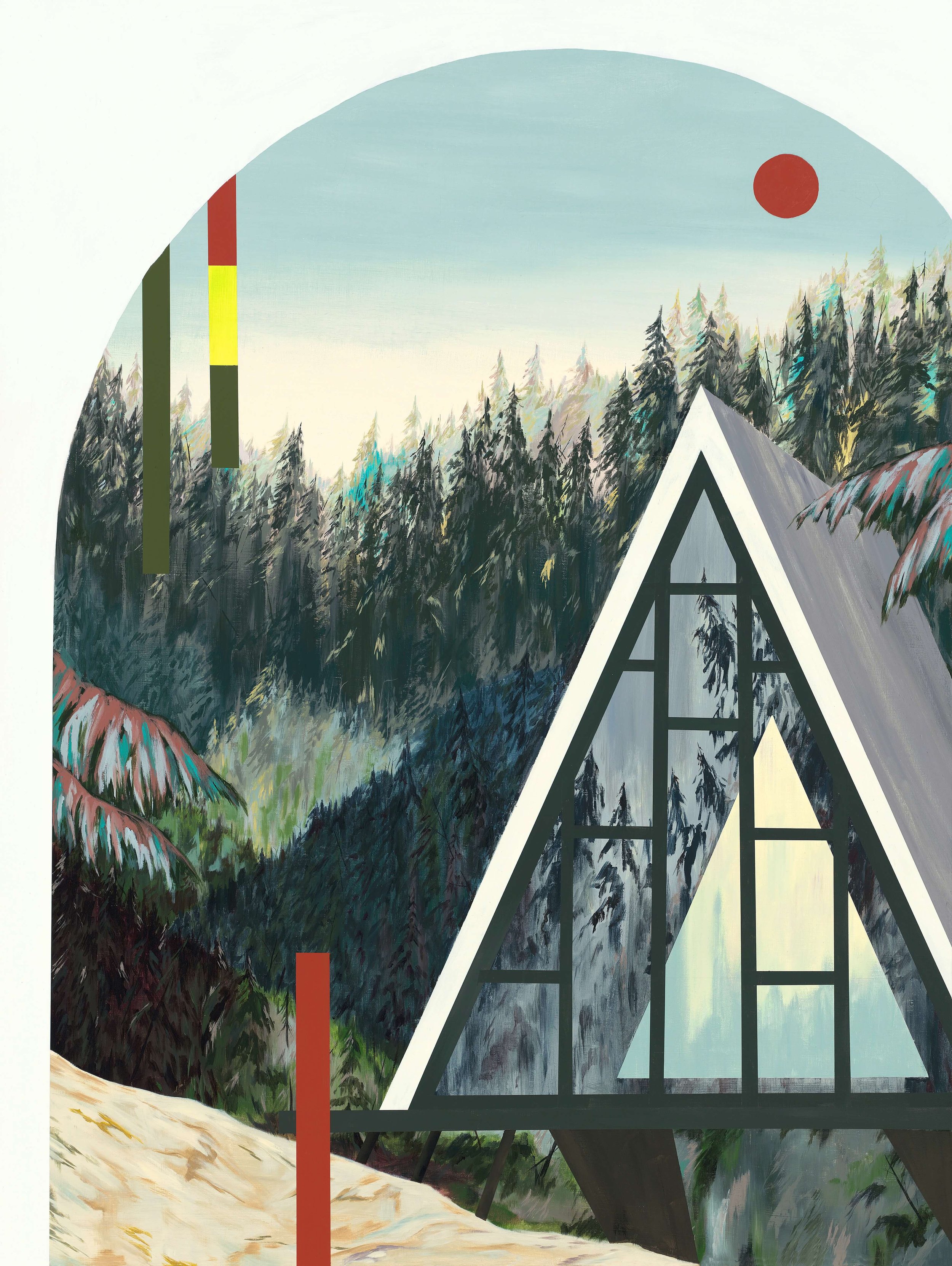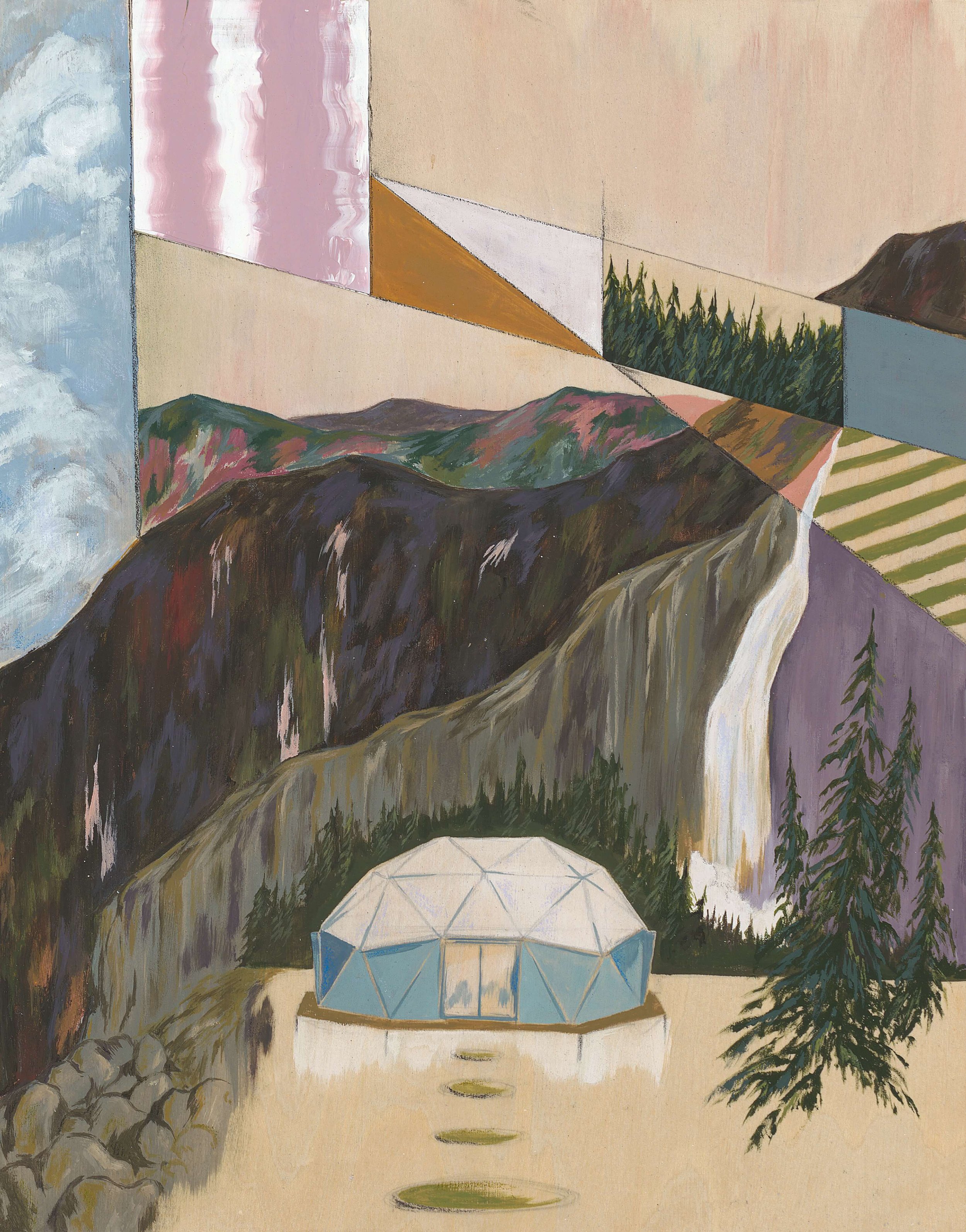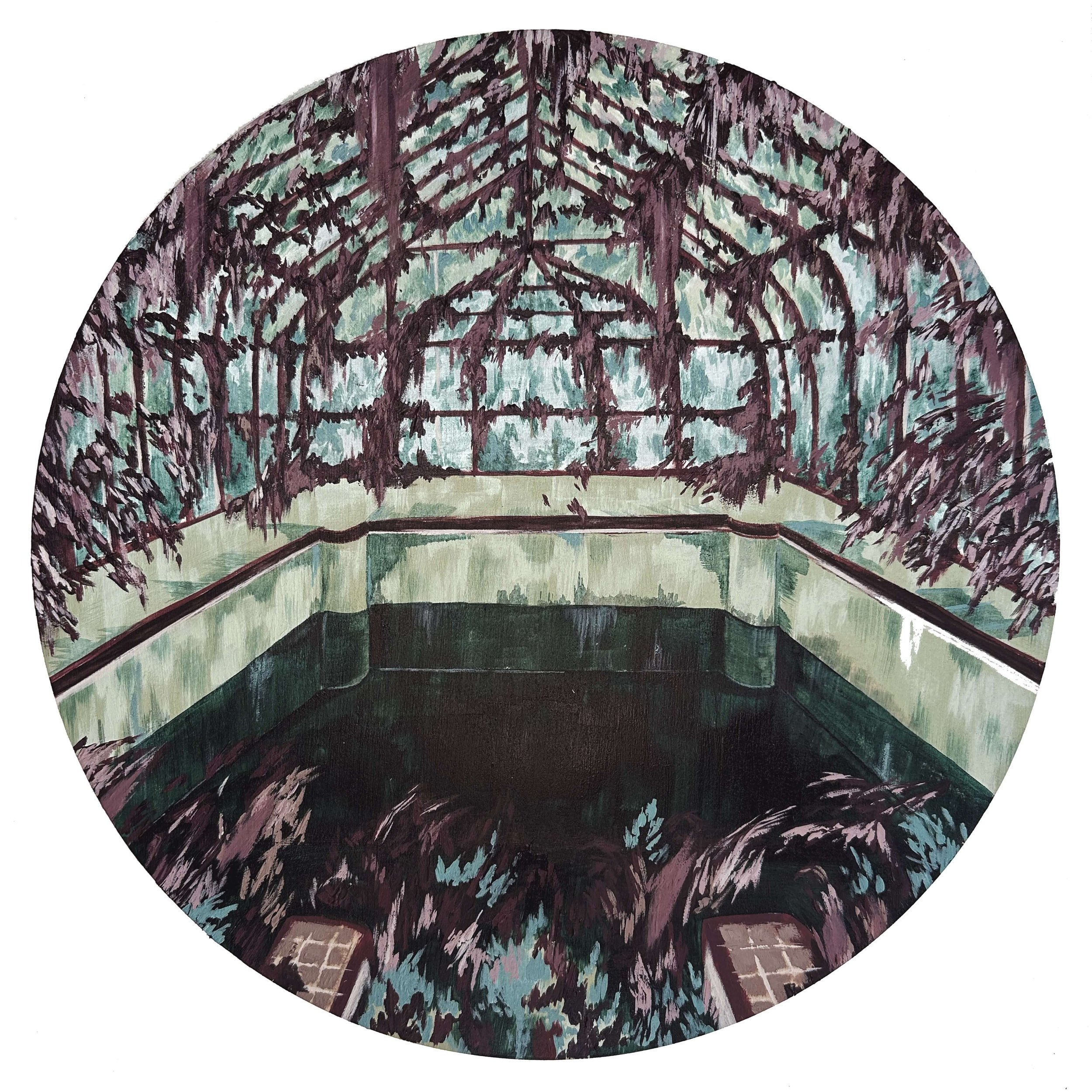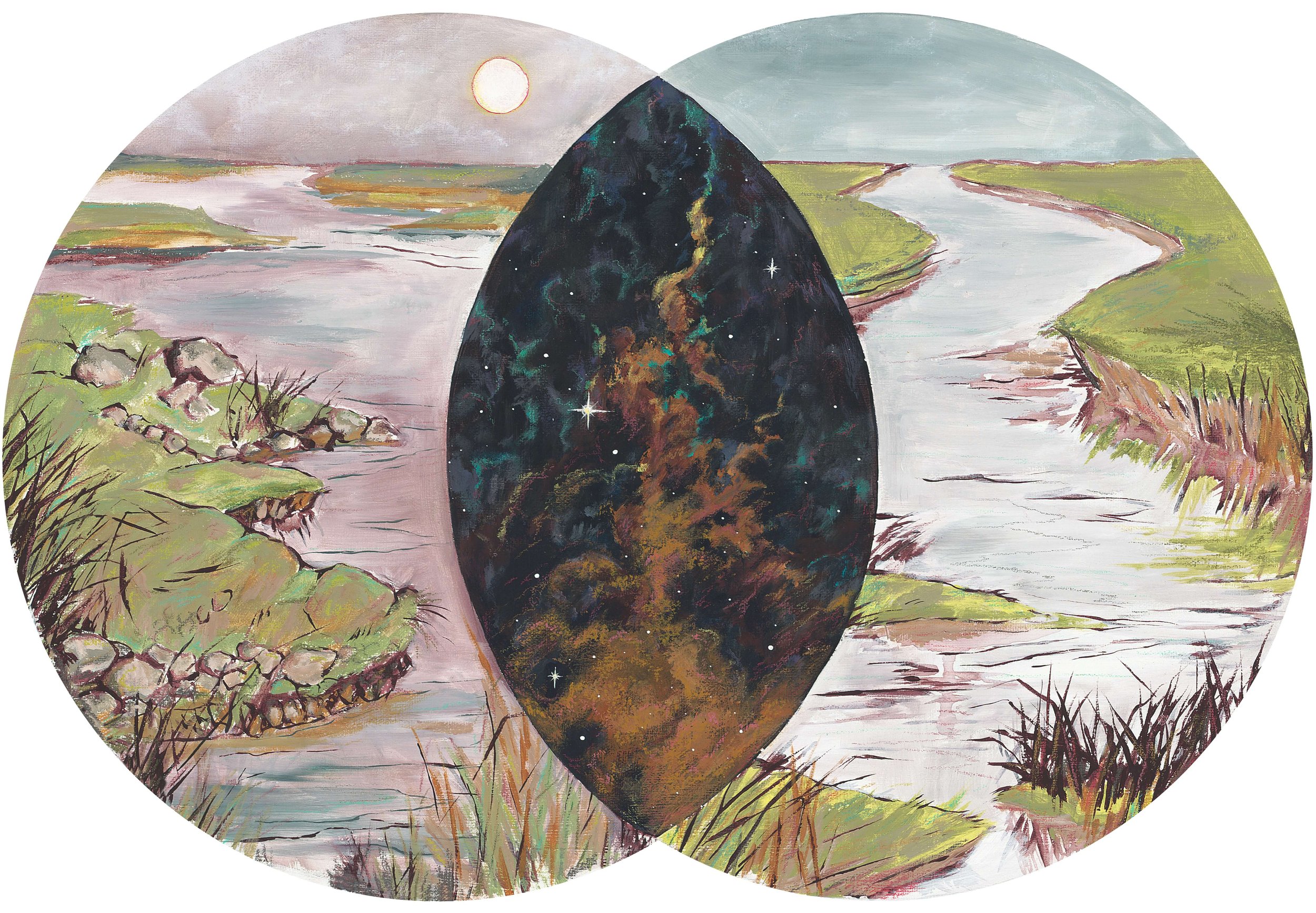Exploring Forgotten Futures: An Interview with Jennifer Peart
Drawing inspiration from both the natural world and the realms of science fiction, Jennifer Peart offers a unique exploration of contemporary landscape painting, showcasing the dynamic interplay between natural and artificial elements. With a degree in Studio Art from Mills College, Oakland, her paintings are representational yet visionary and explorative, probing the reciprocal relationship between humans and our planet.
Through her immersive portrayals of various landscapes, Peart invites viewers to contemplate the intersections of landscape painting history, nature, science, and co-creating better futures. Currently residing and painting full-time in Sacramento, California, her compositions serve as windows into her visions for our future, offering glimpses of alternative realities and parallel worlds.
Artist Statement
Exploring the realms of forgotten futures and abandoned possibilities, where the echoes of what could have been both haunt and inspire us, I draw from mid-century American architecture and visionary science fiction to cultivate optimism for the future of life on Earth. Through painting, I navigate the remnants of idealistic utopias and humanity's faltering attempts to control the forces of nature.
My paintings serve as portals to new realms, reimagining familiar motifs from architectural models and idyllic landscapes to breathe life into abandoned dreams. By recontextualizing these elements, I underscore the intricate relationship between physical and psychological space, pushing the boundaries of traditional landscape painting.
Through unconventional use of color, texture, and spatial inversions, I express my belief in our capacity for innovation and our collective journey toward harmonious coexistence with our living planet.
Can you tell us about your journey as an artist and how you developed your unique approach to contemporary landscape painting?
I grew up in a rural mountain town in Northern California, spending my childhood playing outdoors in all weather, exploring wild landscapes. These experiences fostered a deep connection to the natural world, a bond that continues to inspire my art practice today.
I studied art at Mills College in Oakland, where my mentors encouraged me to merge technical mastery with my personal vision, guiding me to explore the intersection of nature, architecture, design, and traditional landscape painting. After graduating, I worked in education, where engaging with youth inspired me to reflect on our responsibility to create a better world and connect future generations with nature. These experiences shaped my artistic approach, culminating in my visionary landscapes—paintings that reimagine our relationship with the environment and envision harmonious, sustainable futures for all living things.
Your work draws from both the natural world and science fiction. What inspired you to merge these two realms, and how do they influence your vision for the future?
The natural world inspires my art practice with its resilience and cycles of renewal, while science fiction challenges me to expand my imagination and envision alternative futures. By merging these realms, my landscapes act as portals to better futures, where human innovation supports ecological renewal and mutual coexistence. Through world-building on canvas, I hope to encourage people to imagine themselves in futures where humanity innovates in ways that support ecological renewal and collective thriving.
Mid-century architecture and visionary science fiction play key roles in your work. How do these elements inform your reimagined landscapes and abandoned utopias?
Mid-century modern architecture and design, born out of the atomic era, carry a sense of optimism and progress that reflected humanity’s hopefulness about our place in the galaxy. The clean lines and forward-thinking structures symbolized a hopefulness about humanity’s place in the galaxy. I weave these elements into my work as symbols of both promise and caution, reminding us of past aspirations and the work still needed to fulfill them.
Visionary science fiction takes these ideals further, inviting us to deconstruct their limitations and imagine rising from their remnants. The pursuit of utopia—however imperfect—does something profound for the human mind. It fosters hope, drive, and a belief in our ability to improve. My visionary landscapes balance beauty, ingenuity, and cautionary reflection, encouraging viewers to envision futures where humanity is thriving as part of the natural world again.
Your use of unconventional color, texture, and spatial inversions pushes the boundaries of traditional landscape painting. Can you share your process for creating these immersive compositions?
My process begins with intuitive sketches, often created en plein air with watercolors and colored pencils. I take my own reference photos and research the history of the landscapes I’m working on. In my current series on California, I’ve discovered that nearly every part of this region has an Indigenous name and a rich cultural and ecological history.
I use these histories, along with sketches and photos, to create digital designs in Photoshop—though I humorously call it “Frankshop” due to my limited skills. These designs help me explore unique color palettes and compositions featuring geometric shapes and graphic motifs. On wood panels, I layer watercolors, inks, gouache, acrylics, and oils to create the desired textures. Finally, I add finishing details with colored pencils, oil paint sticks, and pastels. By integrating graphic lines and spatial inversions, I challenge traditional perspectives, inviting viewers into reimagined worlds that evoke both emotion and possibility. The process is experimental, evolving with each layer as I explore how color, form, and texture interact.
What message or reflection do you hope viewers take away from your paintings about humanity’s relationship with nature and our potential for innovation?
I hope my work inspires viewers to see humanity’s profound connection to the Earth and consider how we can innovate to coexist with nature rather than dominate it. What might Hetch Hetchy Valley look like today if it had never been dammed? What could a fully restored Sacramento Riverfront mean for the communities and wildlife that rely on it?
Through my visionary landscapes, I aim to spark both hope and urgency, encouraging viewers to imagine futures where creativity, reciprocity, and respect foster thriving ecosystems and collective renewal. Together, we can envision—and work toward—a world where humanity and the planet flourish side by side.
